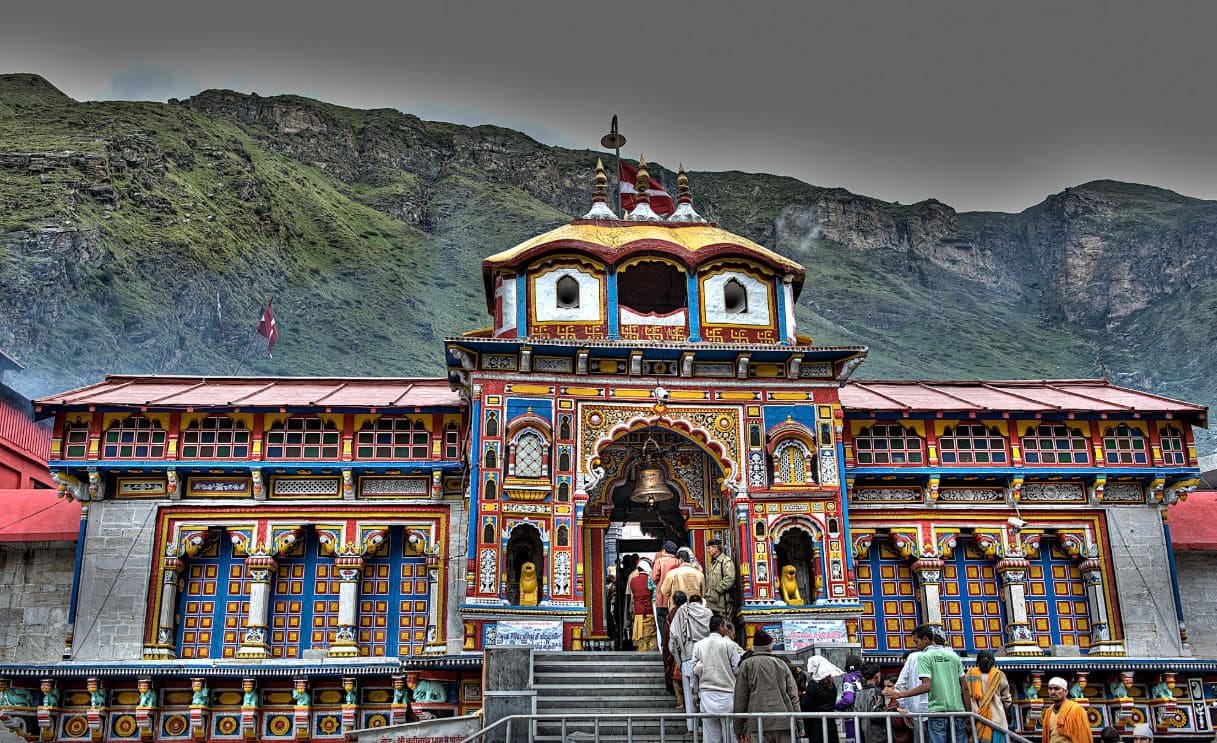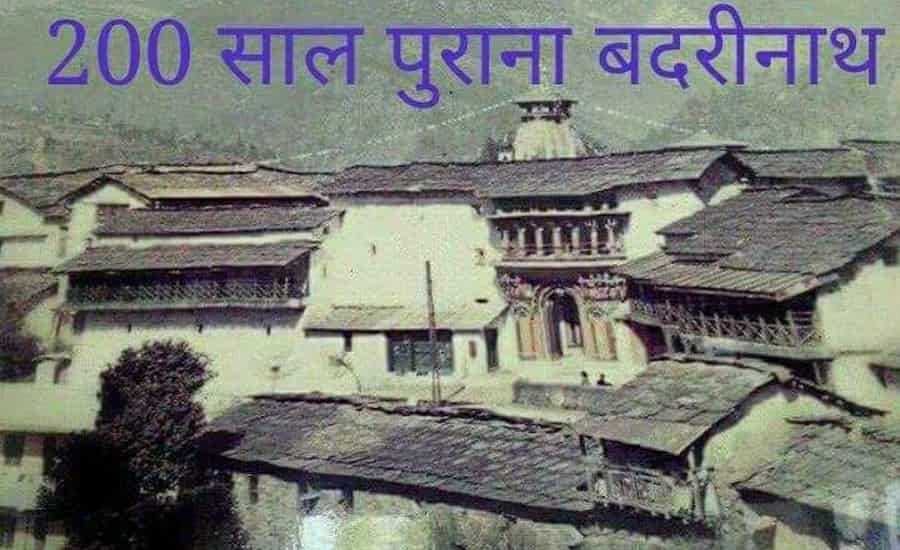Badrinath Dham, one of the holiest pilgrimage sites in India, is situated in the Garhwal region of Uttarakhand. Nestled amidst the majestic Himalayas, this sacred place has a rich history steeped in legends, mythology, and stories that have captivated the hearts of millions of devotees for centuries. This article delves into the fascinating history of Badrinath Dham, exploring the legends, mythology, and stories that have made it an integral part of Indian religious heritage.
Ancient Origins
The history of Badrinath Dham dates back to the Vedic period. According to Hindu scriptures, this region was initially a dense forest known as "Badri Van" (the forest of berries). It was believed to be inhabited by sages and ascetics who practiced intense meditation. The word "Badrinath" is derived from two Sanskrit words, "Badri," which means the Indian Jujube tree, and "Nath," which means Lord or Protector. The name Badrinath, therefore, signifies the Lord of the Jujube tree.
The earliest mention of Badrinath can be found in the ancient texts of the Vedas and the Puranas. It is believed that Lord Vishnu, one of the principal deities in Hinduism, performed intense penance in this sacred land. As a result, this place became associated with Lord Vishnu and subsequently transformed into a significant pilgrimage site.
The Legend of Lord Vishnu
One of the most popular legends surrounding Badrinath Dham is the story of Lord Vishnu's meditation. According to the Bhagavata Purana, a revered Hindu scripture, Lord Vishnu decided to take the form of a child and retreat to the Badri Van for meditation. He sat in deep meditation, and his divine presence attracted countless beings.
As the story goes, Lord Vishnu's tapasya (meditation) in Badrinath lasted for thousands of years, during which his body was entirely covered by the anthill and creeper. Impressed by his devotion and penance, goddess Laxmi, his eternal consort, decided to protect him. She took the form of a Badri tree (Jujube tree) to provide shade and shield him from the harsh natural elements.
In another version of the legend, it is said that Lord Vishnu was in the form of the Badri tree, and it was he who protected the region. This tree came to be known as the Badri Kalpavriksha, which is believed to fulfill the wishes of those who visit it.
The meditation of Lord Vishnu in Badrinath is seen as a profound symbol of self-realization, spirituality, and divine presence. The image of Lord Vishnu in a meditative posture became the presiding deity of Badrinath Dham.
The Emergence of Badrinath Temple
The ancient history of Badrinath Dham did not include the presence of a temple. Pilgrims and devotees offered their prayers and meditated in the open, amidst the natural beauty of the region. However, the temple as we know it today has its own fascinating history.
The Badrinath Temple, dedicated to Lord Vishnu, was initially believed to have been established by Adi Shankaracharya, the great Indian philosopher, and theologian, in the 8th century. Shankaracharya played a pivotal role in reviving and popularizing Hinduism during a period of philosophical and religious diversification in India. He is said to have discovered the idol of Lord Vishnu in the Alaknanda River and enshrined it in the Badrinath Temple.
The temple, a fine example of the Nagara style of architecture, features a tall conical structure known as the shikhara, which is surrounded by a tall stone wall. The interiors of the temple are adorned with intricate carvings and images from Hindu mythology.
The Story of Uddhava and Badrinath
Another enchanting legend associated with Badrinath Dham is the story of Uddhava, a close friend and devotee of Lord Krishna. Uddhava was deeply saddened by the departure of Lord Krishna to his heavenly abode after the Mahabharata war. Seeking solace and divine guidance, Uddhava embarked on a pilgrimage, guided by the instructions of Lord Krishna.
Uddhava's journey brought him to Badrinath, where he meditated and sought the blessings of Lord Vishnu. It is believed that Lord Vishnu, moved by Uddhava's devotion, appeared before him in the form of a child. This divine encounter filled Uddhava with immense joy and peace, and he continued his journey with a heart full of devotion.
The story of Uddhava's pilgrimage to Badrinath is a testament to the significance of this sacred place as a source of spiritual inspiration and divine connection.
- Suggested to Read: Lesser Known Facts and Information
The Spiritual Significance
Badrinath Dham is not just a religious pilgrimage site; it holds deep spiritual significance in Hinduism. It is one of the four sacred abodes or Chota Char Dham, the other three being Kedarnath, Gangotri, and Yamunotri. The larger Char Dham circuit includes these four shrines along with Badrinath Dham and is a vital pilgrimage for Hindus seeking spiritual enlightenment and salvation.
It is believed that a pilgrimage to Badrinath Dham washes away one's sins and helps in attaining moksha (liberation). The journey to Badrinath Dham involves traversing challenging terrain and enduring harsh weather conditions, making it a test of one's devotion and determination.
The Annual Char Dham Yatra
The Char Dham Yatra, which includes Badrinath Dham, is an annual pilgrimage that takes place during the summer months. Pilgrims from all over India and the world visit the sacred shrines of Badrinath, Kedarnath, Gangotri, and Yamunotri. The Yatra usually begins in April or May and continues until October, when the shrines are closed for the winter due to heavy snowfall.
The Yatra involves a trek to each of the four shrines and is considered a transformative journey for the participants. Pilgrims believe that by visiting these holy places, they can cleanse themselves of their sins and attain spiritual elevation.
The Narasimha Temple
Apart from the main Badrinath Temple, the region is also home to the Narasimha Temple. This temple is dedicated to Lord Narasimha, one of the ten avatars (incarnations) of Lord Vishnu. The idol in this temple is unique, as it has eight arms holding various divine weapons.
According to legend, Lord Narasimha appeared in this form to protect his devotee, Prahlada, from his demon father, Hiranyakashipu. The Narasimha Temple is an essential stop on the Badrinath pilgrimage and is located close to the main Badrinath Temple.
The Alaknanda River and Tapt Kund
The Alaknanda River, a tributary of the Ganges, flows through the town of Badrinath. The river is considered holy by Hindus, and taking a dip in its waters is believed to cleanse one of sins. Pilgrims often perform a ritual bath in the Alaknanda before entering the Badrinath Temple.
Tapt Kund, a natural thermal spring, is another prominent attraction in Badrinath. The word "Tapt" means hot, and the kund (pool) is renowned for its hot water, rich in minerals. It is believed that taking a dip in Tapt Kund has healing properties and can cure various ailments. The water temperature can be scalding, but it's considered a divine blessing to bathe in it.
The Legend of Mata Murti Temple
Mata Murti Temple, located near Badrinath, is dedicated to the mother of Lord Badrinath. According to legend, Mata Murti prayed to Lord Vishnu to find a suitable bride for her son. In response to her prayers, Lord Vishnu promised to return to Badrinath after completing his divine mission and marry Mata Murti's daughter.
The temple is an integral part of the Badrinath pilgrimage, and the annual Mata Murti Mela, celebrated in September, marks the divine union of Lord Badrinath and Mata Murti's daughter.
The Charming Village of Mana
The village of Mana, situated near Badrinath, is known for its serene beauty and its connection to several mythological stories. It is considered to be the last Indian village before the Indo-China border and is often referred to as the "last village of India." Some of the prominent attractions in Mana include:
- Vasudhara Falls: The Vasudhara Falls, a short trek from Mana, is a captivating natural wonder. According to folklore, it is believed that the waterfalls have the power to cleanse sins and fulfill the wishes of those who visit.
- Bhim Pul: Bhim Pul is a massive rock bridge over the Saraswati River, named after Bhima, one of the Pandava brothers from the Mahabharata. It is believed that Bhima placed this rock bridge to help Draupadi, his wife, cross the river.
- Vyas Gufa: Vyas Gufa is a cave believed to be the place where the sage Vyas, who is credited with composing the Mahabharata, meditated and wrote the epic. The cave has ancient scriptures and a stone image of Vedavyasa.
- Ganesh Gufa: Ganesh Gufa is another cave associated with the sage Vyas, where he is believed to have dictated the Mahabharata to Lord Ganesha, who wrote it down.
The Chariots of the Deities
One of the unique traditions at Badrinath Dham is the use of ornate chariots for the deities. During the temple's opening and closing ceremonies, the presiding deity, Lord Badrinath, and other deities are taken out in beautifully decorated chariots. These chariots are a symbol of grandeur and are an integral part of the temple's annual rituals.
The annual closing ceremony of the temple, known as "Badrinath Yatra," takes place on Vijayadashami, marking the end of the pilgrim season. The temple is covered in snow during the winter months, and it remains closed until the next summer when the pilgrimage season resumes.
The Threat of Natural Disasters
While Badrinath Dham has a rich history of legends and spirituality, it is also known for its vulnerability to natural disasters. The region is prone to earthquakes, landslides, and heavy snowfall. These challenges have threatened the infrastructure and the safety of the pilgrims. Over the years, efforts have been made to enhance safety measures and rebuild damaged structures, allowing the pilgrimage to continue.
Conclusion
Badrinath Dham stands as a symbol of devotion, spirituality, and the rich tapestry of Hindu mythology. Its history is interwoven with legends and stories that have been passed down through generations. The annual pilgrimage to Badrinath, as part of the Char Dham Yatra, remains a significant event in the lives of millions of Hindus who seek to connect with the divine, cleanse their souls, and find solace in the tranquil beauty of the Himalayas.
As a place where Lord Vishnu himself meditated, Badrinath Dham continues to draw pilgrims from around the world, offering them not only a chance to experience the divine but also the opportunity to immerse themselves in the enchanting history, mythology, and stories that make this sacred land so extraordinary.


0 comments:
Post a Comment